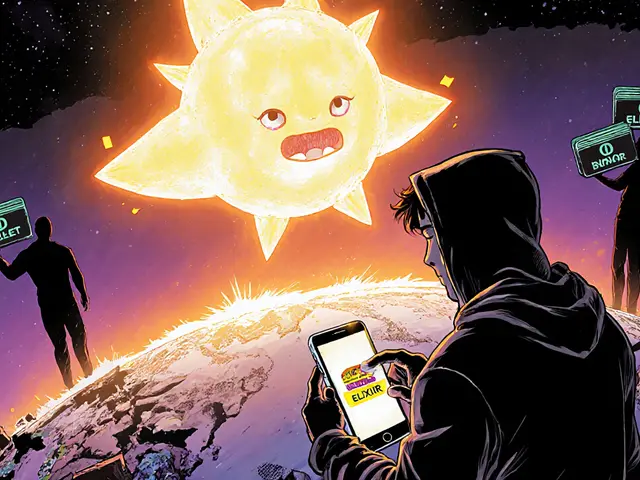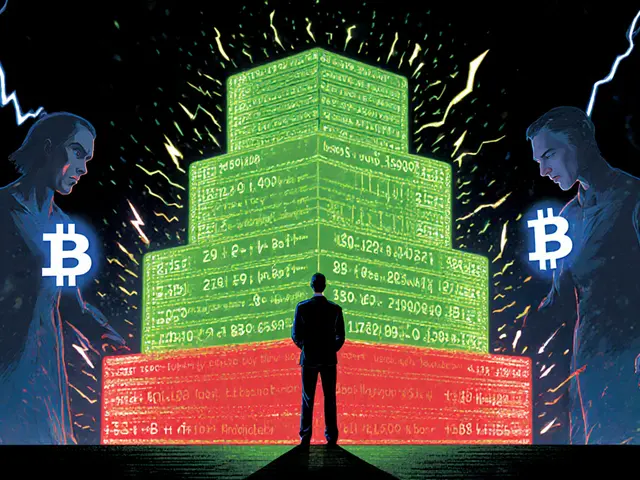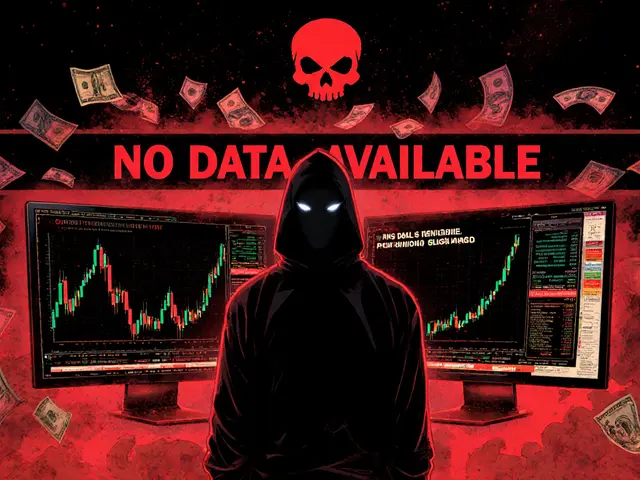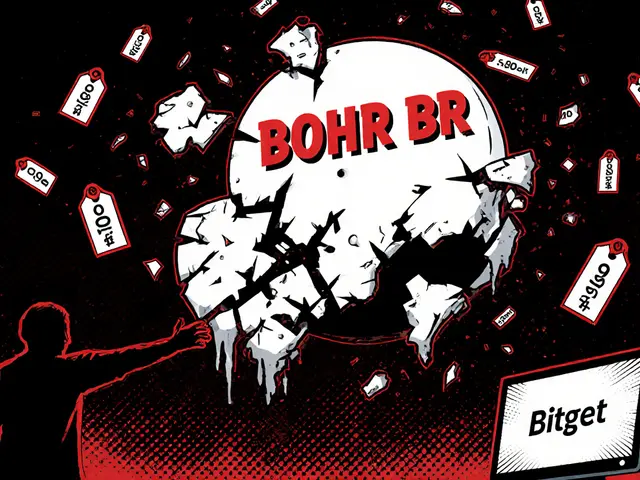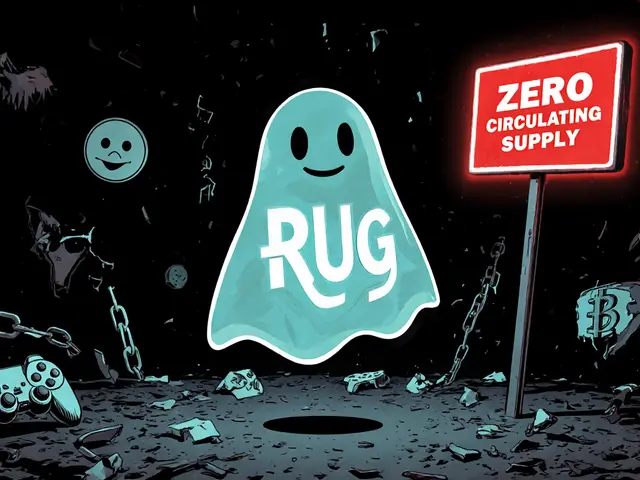- Home
- Cryptocurrency
- KALATA (KALA) X CoinMarketCap Airdrop: What Happened and What You Missed
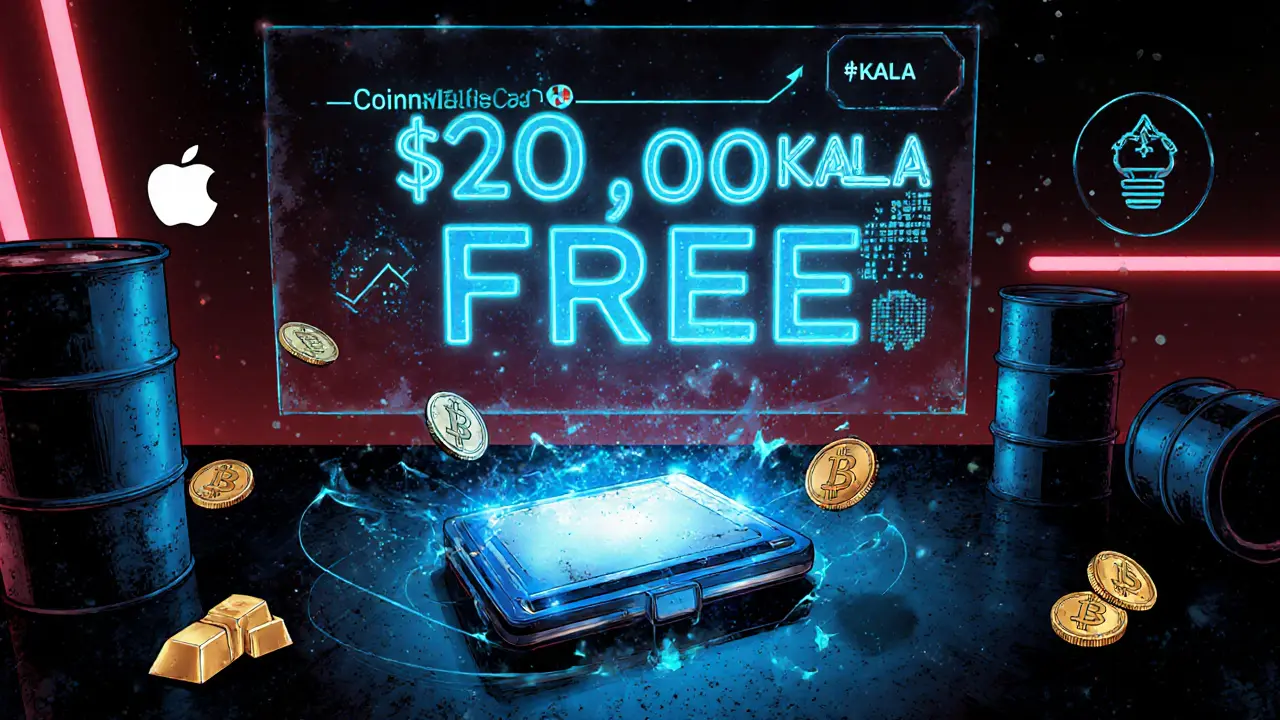
KALATA (KALA) X CoinMarketCap Airdrop: What Happened and What You Missed
KALA Token Value Calculator
How to Use This Calculator
Enter your airdrop amount (20,000 KALA tokens) and select a date to estimate the value of your tokens at that time. This calculator uses historical market data to show how the KALATA token value changed from 2021 to present.
Important Note: The KALATA airdrop was valid in 2021. Tokens were distributed via a public smart contract (0x3229...a610c5). This calculator shows historical value estimates based on actual market conditions, not current value.
Estimate Your Airdrop Value
Estimated Value
Key Value Points
Value History
The KALATA token reached its highest value shortly after the airdrop distribution in late 2021, with prices around $0.001 per token. However, due to declining market interest, liquidity issues, and competition from other synthetic asset platforms, the token value gradually decreased over time.
Back in 2021, if you were active in crypto and checked CoinMarketCap regularly, you might have seen a small banner offering 20,000 $KALA tokens for free. It wasn’t flashy. No celebrity endorsements. No viral TikTok dances. Just a simple call to action: Follow these steps, get tokens. That was the KALATA X CoinMarketCap airdrop - a quiet but meaningful moment in the early days of synthetic DeFi.
Today, those tokens are worth next to nothing on most exchanges. But that’s not the whole story. The real question isn’t whether you got rich - it’s whether you understood what the airdrop was really for. And if you missed it, could it have changed how you think about DeFi airdrops today?
What Was the KALATA Protocol?
KALATA Protocol wasn’t another memecoin or a copy of Uniswap. It was trying to do something radical: let people trade real-world assets like Apple stock, gold, or oil - entirely on-chain, without brokers. No brokerage account? No problem. You could lock up crypto as collateral and trade synthetic versions of those assets using a peer-to-pool engine.
Think of it like a decentralized futures exchange built for anyone with a wallet. If you believed Tesla would go up, you didn’t need to buy shares through Robinhood. You could mint a synthetic token representing Tesla stock, trade it, and close your position - all without leaving your crypto wallet. The system used decentralized price feeds to track real-time asset values. If your collateral dropped too low, it got liquidated. Simple. Automated. No middlemen.
The native token, KALA, was the backbone of this system. It wasn’t just a currency. It was used for governance, fee discounts, and as a buffer against protocol risk. The total supply was capped at 200 million KALA. At launch, only 35 million were in circulation. That meant over 80% of the supply was held back - not for the team, but for future community incentives, liquidity mining, and ecosystem growth.
The CoinMarketCap Airdrop: What You Had to Do
The airdrop was a partnership between Kalata Protocol and CoinMarketCap, one of the most trusted crypto data platforms at the time. CoinMarketCap had over 100 million monthly users. Getting in front of them was a huge win for a small DeFi project.
Participants had to complete three basic steps:
- Follow the official KALATA Twitter account.
- Join the KALATA Telegram group.
- Verify your CoinMarketCap account by linking your wallet.
That’s it. No KYC. No deposit. No risk. If you did those three things, you got 20,000 KALA tokens automatically sent to your connected wallet. The contract address was 0x3229...a610c5 - public, auditable, and verifiable. You could check the transaction history on Etherscan anytime.
The campaign ran for about two weeks. Around 150,000 people signed up. That means roughly 3 billion KALA tokens were distributed - just 1.5% of the total supply. It was a tiny slice, but it reached a high-quality audience: active crypto users who already used CoinMarketCap to track prices, not just speculators chasing the next pump.
Why This Airdrop Was Different
Most airdrops in 2021 were spammy. Projects dumped tokens on random wallets, hoping someone would trade them and create fake volume. KALATA’s approach was smarter.
First, they didn’t give tokens to bots. CoinMarketCap’s wallet verification system filtered out fake accounts. Second, they targeted users who already cared about market data - people who were more likely to understand synthetic assets than just flip tokens. Third, they didn’t dump all the tokens at once. By holding back 82.5% of supply, they signaled long-term commitment.
This wasn’t a marketing stunt. It was a community-building move. The goal wasn’t to make people rich overnight. It was to find early adopters who would use the platform, provide liquidity, and help grow the protocol from the ground up.
Some participants sold their 20,000 KALA tokens the moment they arrived. Others held. A few even started creating YouTube tutorials on how to use KALATA’s trading interface. That organic content helped spread awareness more than any paid ad ever could.
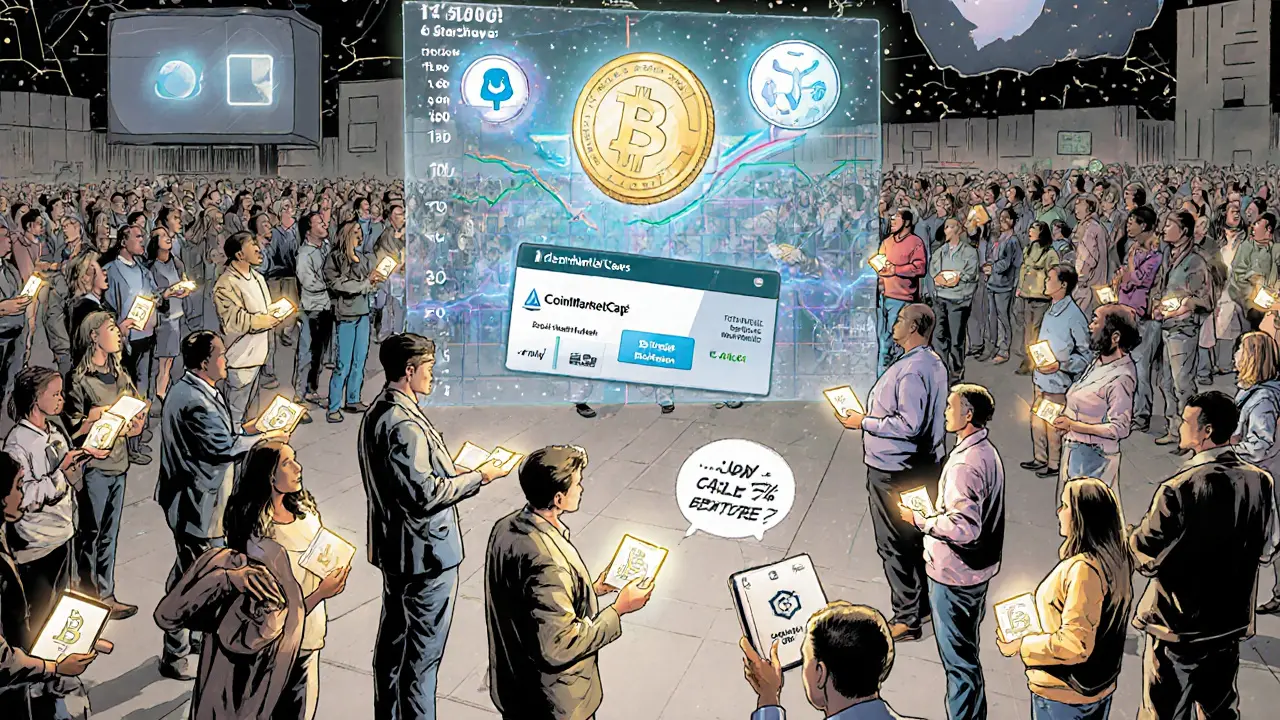
What Happened After the Airdrop?
The airdrop didn’t lead to a massive price surge. KALA never cracked $0.01 on major exchanges. By late 2022, trading volume dropped off. The protocol didn’t shut down - it just went quiet. No major updates. No new listings. No big partnerships.
Why? The synthetic asset space faced headwinds. Regulatory uncertainty around tokenized stocks grew. Liquidity remained thin. Competitors like Synthetix and Mirror Protocol had deeper pockets and more established ecosystems. KALATA couldn’t keep up.
But here’s the twist: the airdrop wasn’t a failure. It did exactly what it was designed to do. It seeded a community of 150,000 real users. It gave the protocol legitimacy by being listed on CoinMarketCap. And it proved the idea could work - even if the business model didn’t scale.
Today, if you look up KALATA on CoinMarketCap, you’ll still see the token listed. The contract address is still active. The 35 million circulating supply hasn’t changed. The 200 million cap is still there. The airdrop recipients? Most have moved on. But the data is still there - a snapshot of what early DeFi community building looked like before the hype cycle burned out.
What You Can Learn From This Airdrop
If you’re waiting for the next big airdrop, here’s what the KALATA experience teaches you:
- Don’t chase free tokens - chase utility. If a project doesn’t have a clear use case beyond speculation, the tokens won’t hold value.
- Check the tokenomics. Is 80% of supply locked? That’s a good sign. Is 90% already distributed? Red flag.
- Verify the platform. Airdrops on CoinMarketCap, CoinGecko, or established DeFi platforms are more trustworthy than random Twitter giveaways.
- Look at the team’s history. Did they ship before? Or are they just building hype?
- Hold for use, not profit. The real value in early airdrops isn’t in selling - it’s in using the product. If you’re not going to interact with the protocol, you’re just a speculator.
The KALATA airdrop didn’t make anyone rich. But it gave a small group of users a front-row seat to a bold experiment in DeFi. That’s worth more than a few hundred dollars in tokens.
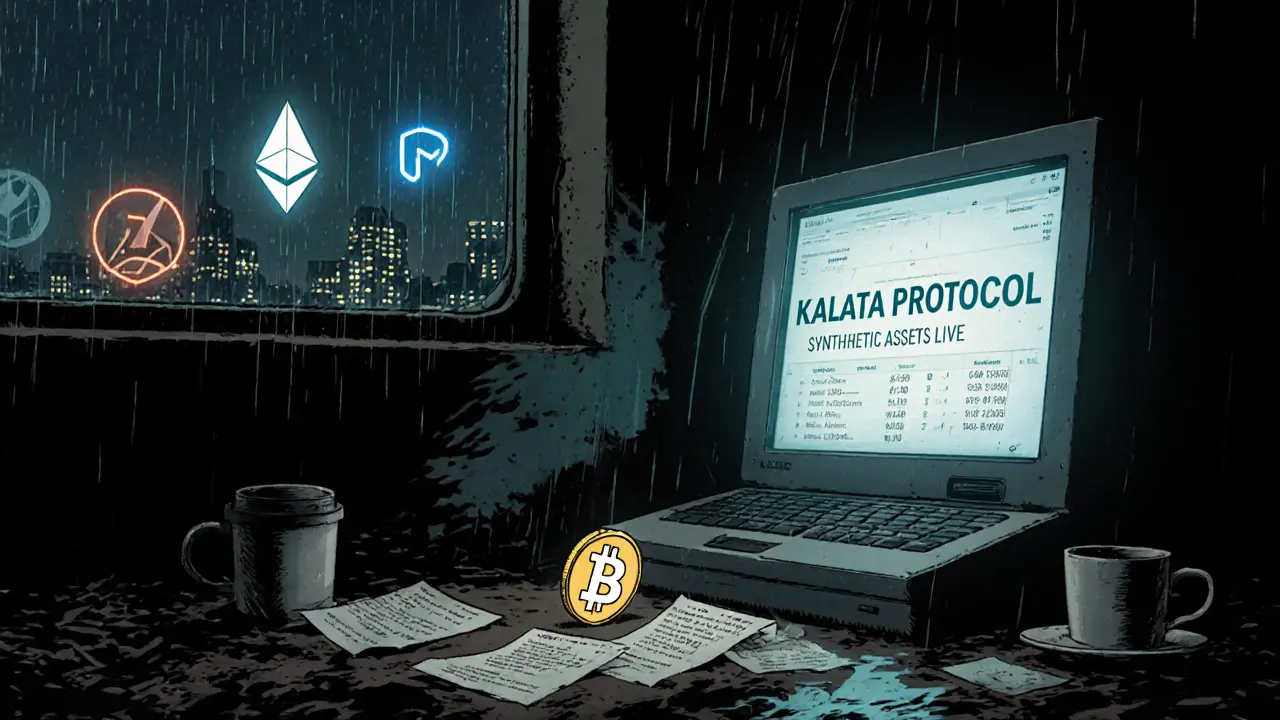
Is There Still a Chance to Get KALA Tokens?
No. The CoinMarketCap airdrop ended in 2021. There have been no follow-up campaigns. No new distribution events. No official announcements about future airdrops.
If you see someone claiming to be running a "KALATA airdrop" today, it’s a scam. The project is inactive. The official website is offline. The social channels haven’t posted in years.
Don’t connect your wallet. Don’t send any crypto. Don’t click any links. The only legitimate way to get KALA now is to buy it on a decentralized exchange - but even then, liquidity is extremely low, and the price is negligible.
Where Is KALATA Now?
KALATA Protocol hasn’t been updated since 2022. The team hasn’t released new documentation. No new partnerships. No new token listings. The CoinMarketCap page still exists, but it’s essentially an archive.
That doesn’t mean the idea died. Synthetic assets are still growing. Projects like Synthetix and Pendle are building on similar concepts - but with better funding, stronger teams, and deeper liquidity. KALATA was a prototype. It showed the path. Others are walking it now.
If you’re interested in synthetic DeFi today, look at those projects instead. Learn from KALATA’s experiment, but don’t waste time chasing dead tokens.
Was the KALATA airdrop real?
Yes, the KALATA X CoinMarketCap airdrop was real and ran in 2021. It distributed 20,000 $KALA tokens to users who followed the official Twitter, joined the Telegram group, and verified their CoinMarketCap wallet. The distribution was handled through a public smart contract with address 0x3229...a610c5, which can be verified on Etherscan.
Can I still claim KALA tokens from the airdrop?
No, the airdrop campaign ended in 2021. There is no active claim portal, and the project has been inactive since 2022. Any website or social media post claiming to offer KALA tokens today is a scam. Do not connect your wallet or send any funds.
How many KALA tokens were distributed in the airdrop?
Approximately 3 billion KALA tokens were distributed across 150,000 participants, with each recipient receiving 20,000 tokens. This represented just 1.5% of the total 200 million KALA supply, indicating a conservative distribution strategy aimed at long-term ecosystem growth.
Why did the KALATA Protocol fail to grow?
KALATA faced challenges common to early synthetic asset platforms: low liquidity, regulatory uncertainty around tokenized stocks, and stiff competition from better-funded projects like Synthetix. Without ongoing development, marketing, or team updates after 2022, user interest faded. The protocol never reached critical mass for trading volume or community engagement.
Is KALA listed on any exchanges today?
KALA is still listed on CoinMarketCap and a few decentralized exchanges like Uniswap, but trading volume is negligible. Liquidity pools are nearly empty, and prices are below $0.0001. It’s not actively traded, and no major centralized exchanges support it.
Cormac Riverton
I'm a blockchain analyst and private investor specializing in cryptocurrencies and equity markets. I research tokenomics, on-chain data, and market microstructure, and advise startups on exchange listings. I also write practical explainers and strategy notes for retail traders and fund teams. My work blends quantitative analysis with clear storytelling to make complex systems understandable.
About
DEX Maniac is your hub for blockchain knowledge, cryptocurrencies, and global markets. Explore guides on crypto coins, DeFi, and decentralized exchanges with clear, actionable insights. Compare crypto exchanges, track airdrop opportunities, and follow timely market analysis across crypto and stocks. Stay informed with curated news, tools, and insights for smarter decisions.

